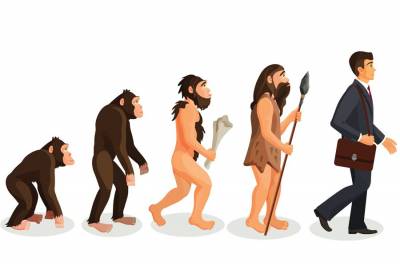Everyone knows that the modern gentleman is a symbol of style, refinement, manners and etiquette, but what is the history of the gentleman? How has he evolved through the ages to what he is and stands for today? From the glamor of the aristocracy to the sophisticated man of today, take a journey through time with us as we explore the evolution of the gentleman throughout history.

The story of the gentleman
The history of the gentleman can be traced all the way back to ancient times, 500 BC onwards, when the aristocracy and upper classes were distinguished by their dress, attitude and way of life. In ancient Greece and Rome, the gentleman was known for his education, courtesy and ability to engage in philosophical and political discussions. These gentlemen aspired to an ideal of perfection and balance.
As antiquity drew to a close and the Middle Ages and Renaissance took over, 500 – 1500 AD, the gentleman became further defined and stylized. The virtues of chivalry such as honesty, bravery and honor became central to the gentleman’s character, while dress became more important than ever in expressing the gentleman’s social status and taste. It was during this period that the concept of the ‘gentleman’ began to take shape.
The gentleman reached his absolute peak in the 18th and 19th centuries, during the Georgian and Victorian eras. It was a time of grandeur and elegance where the gentleman’s dress and behavior were strictly regulated. The British upper class and members of the nobility played a crucial role in defining the gentleman as a symbol of status and culture. Rules of etiquette and social conventions dictated the gentleman’s behavior, which included being polite, attentive and having good manners.
Towards the end of the 19th century, industrialization and the rise of the middle class meant that more men were able to adopt the gentleman’s ideals, changing the gentleman once again. It was no longer just about social status but about personal refinement and style. The gentleman became more accessible to ordinary people and became the ideal image of the modern man.
The modern gentleman
Today, the gentleman has adapted to the modern world but still retains his classic charm. It is no longer about following strict rules of etiquette, but rather being authentic and following your own values. The modern gentleman is conscious of his appearance and style of dress, and focuses on quality and well-made garments. He is confident, independent and has a positive impact on his surroundings.
The modern gentleman is also aware of the importance of being respectful and empathetic. He strives to be a role model for others by showing respect for women and his fellow men, he shows concern for other people and is aware of the needs of society. He understands that being a true gentleman is not only about personal success but also about giving back to society.
Today’s gentlemen understand that education and knowledge are essential. They invest time and effort in developing themselves both intellectually and spiritually. They strive to be well informed about world events, art, culture and literature. They look for opportunities to grow and develop both personally and professionally.
The modern gentleman is also aware of the importance of maintaining a healthy lifestyle. He understands that physical and mental health are fundamental to achieving his full potential. Through regular exercise and good dietary habits, he takes care of his body and well-being.
Conclusion
The history of the gentleman goes back more than 2000 years and has evolved with the changes in society. From ancient times to today’s modern era, the gentleman has always been a symbol of style, refinement and etiquette. He has adapted to changes in society and has become a role model for the modern man.
The modern gentleman understands that it is not about following rigid rules but having an inner compass that guides him towards being an authentic and respectful individual. He values education, self-development and a healthy lifestyle. He strives to be a role model for others and make a positive impact on society.
The Gentleman’s History is a journey through the definition of style and sophistication over time. It is a story that inspires and reminds us of the importance of being true to oneself, having integrity and showing respect for others. By embracing the ideals of the gentleman, we can all strive to be better versions of ourselves and contribute to a world where style, refinement and etiquette are fundamental values.